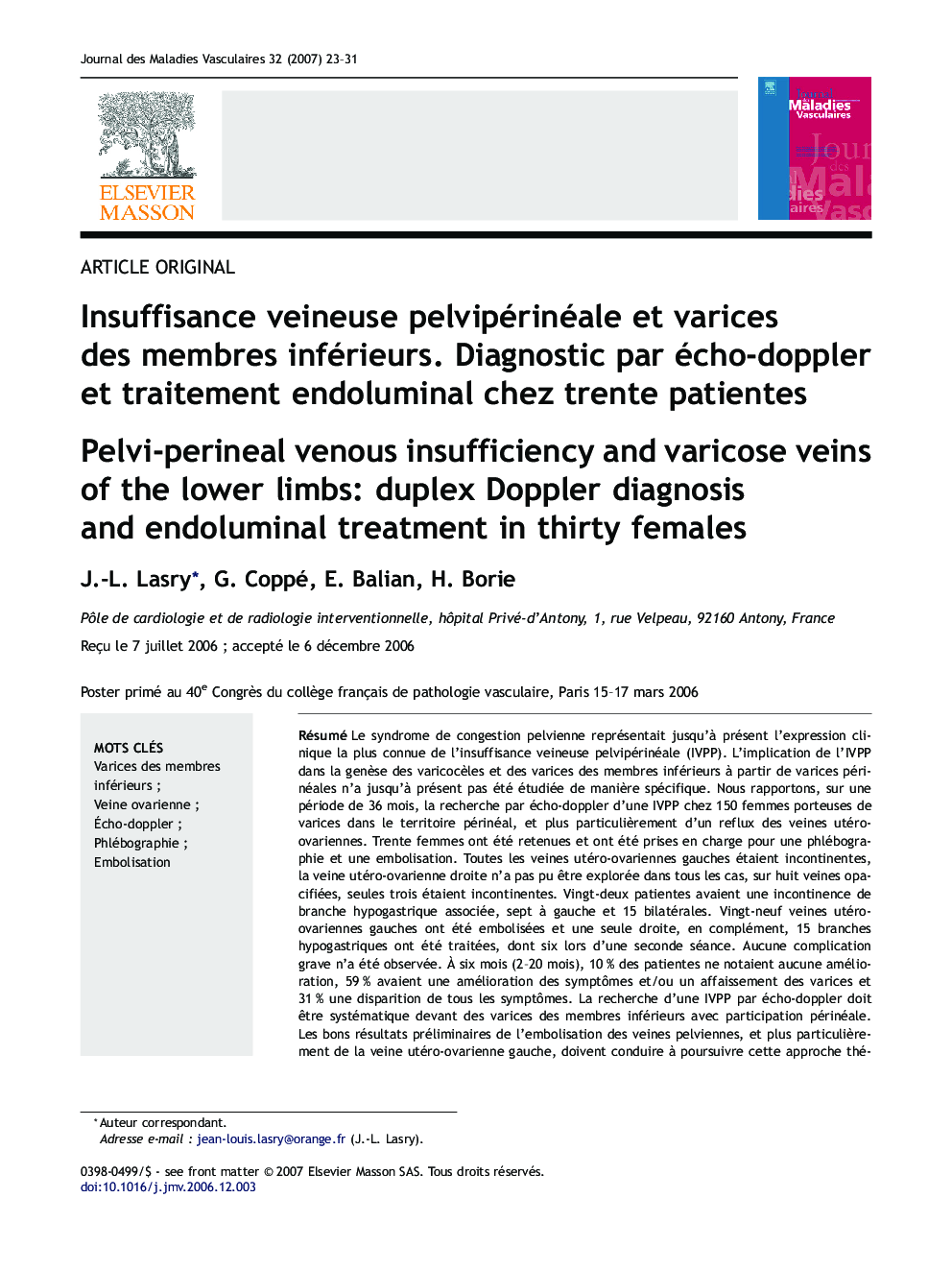| Article ID | Journal | Published Year | Pages | File Type |
|---|---|---|---|---|
| 2975948 | Journal des Maladies Vasculaires | 2007 | 9 Pages |
Abstract
Pelvic congestion is the most commonly recognized consequence of pelvi-perineal venous insufficiency (PPVI). The implication of PPVI in the generation of varicoceles and varicose veins of the lower limbs arising from perineal varices has not been studied specifically. We report our duplex-Doppler findings in a series of 150 women seen over a period of 36Â months. All patients presented perineal varices and, more specifically, utero-ovarian venous reflux. Thirty women were retained for phlebography then treatment by embolization. All of the left utero-ovarian veins were incontinent, the right utero-ovarian vein could not be explored in one patient, and only three of the eight opacified veins were incontinent. Twenty-two patients presented an associated incontinence of the hypogastric branch (7 left, 15 bilateral). Embolization was performed on 29 left utero-ovarian veins and one right vein with, as complementary treatment, embolization of 15Â hypogastric branches, six during a second session. There were no serious complications. At six months (range 2-20Â months), no improvement was noted in 10% of the patients, symptoms had improved or the varices had diminished in 59%, and all symptoms had disappeared in 31%. A duplex-Doppler exploration should be performed to search for perineal involvement in all patients presenting varicose veins of the lower limbs. The good preliminary results obtained after embolization of the pelvic veins, and particularly the left utero-ovarian vein, suggests this therapeutic approach should be pursued. The long-term effect should be assessed because of the plexiform nature of recurrent venous disorders.
Keywords
Related Topics
Health Sciences
Medicine and Dentistry
Cardiology and Cardiovascular Medicine
Authors
J.-L. Lasry, G. Coppé, E. Balian, H. Borie,
